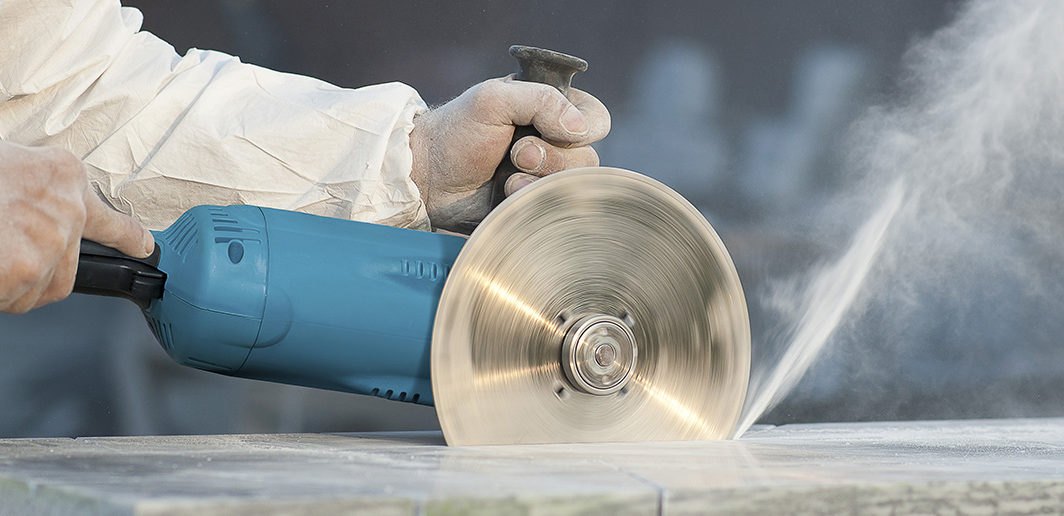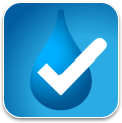The Occupational Health and Safety Regulations 2017 (OHS Regulations) have been amended to provide greater protection to Victorian employees working with engineered stone. They now prohibit uncontrolled cutting, grinding and abrasive polishing of engineered stone with power tools. The amendments came into effect on 20 August 2019.
How is crystalline silica harmful?
When engineered stone products are processed, for example by cutting, grinding or polishing with a power tool, very fine dust containing respirable crystalline silica is released into the air.
People working with these products, such as stonemasons, are at high risk of being exposed to the dust if it is not controlled. Exposure can result in silicosis, chronic bronchitis, emphysema, lung cancer, kidney damage and scleroderma.

What is considered engineered stone?
The amended regulations define engineered stone as manufactured composite stone that contains resins and has a crystalline silica content of at least 80 per cent.
Engineered stone is commonly used as kitchen, bathroom and laundry benchtops.
To find out how much crystalline silica is in a product check the safety data sheet or other information from the supplier.
As a guide, Master Plumbers researched common products* and the levels of crystalline silica stated in their Safety Data Sheet (SDS):
| Product | % of quartz and crystalline silica stated in the SDS |
| ‘Caesarstone’ benchtop | Up to 93% |
| ‘Essastone’ benchtop | 70 - 95% |
| ‘Boral’ pre-mixed concrete | 30 - 60% |
| ‘Boral’ concrete roof tiles | <60% |
| ‘Austral’ clay bricks and pavers | Up to 60% |
A google search or a call to the supplier can usually provide you with the product’s Safety Data Sheet.
You can see even from a quick comparison such as above, that many products contain crystalline silica, however the engineered stone contains higher amounts.
These amendments refer specifically to products that contain 80% or more crystalline silica, however good safety practice would be to consider the amount and exposure levels to silica dust in all products over time and control risks accordingly.
*Please note this is just a guide and is not a recommendation for or against the use of any product.
What does the ban mean?
Under the amended regulations, an employer, self-employed person or person who manages or controls a workplace must ensure a power tool is not used to cut, grind or abrasively polish engineered stone, unless the tool:
- has an integrated water delivery system that supplies a continuous feed of water (on-tool water suppression),
- is fitted with on-tool extraction attached to a HEPA filtered dust class H vacuum cleaner (or similar system that captures the dust generated).
If these controls are not reasonably practicable, the use of power tools must be controlled through local exhaust ventilation (LEV).
This video provides overview of a range of tools that can assist with dust management.
It also means that people cutting, grinding or polishing engineered stone with a power tool must be provided with respiratory protective equipment (RPE) that:
- is designed to protect the wearer from the inhalation of airborne contaminants entering the nose, mouth and lungs
- complies with AS/NZS 1716 - Respiratory protective devices.
RPE needs to have at least a P2 filter and be tested to ensure correct facial fit for each person.
Where facial hair interferes with the fit of the respirator, a powered respirator that does not rely on a facial seal must be used.
All controls must be properly designed, installed, used and maintained so they stay effective at reducing exposure to crystalline silica dust.
Note: Respiratory protection is not mandated when fully automated cutting, grinding or polishing systems are used, as long as employee exposure levels are below the exposure standard. If there is any uncertainty about whether the exposure standard is, or may be exceeded, atmospheric (personal) monitoring of employees must be completed.
More information can be found here: https://www.worksafe.vic.gov.au/working-engineered-stone and from the OHS Advisor on (03) 9321 0745.
Please note the products provided above are compliant examples, however it is not an exhaustive list. You may find an alternative type on the market but please ensure that it complies with the information provided above.
Share this Article






